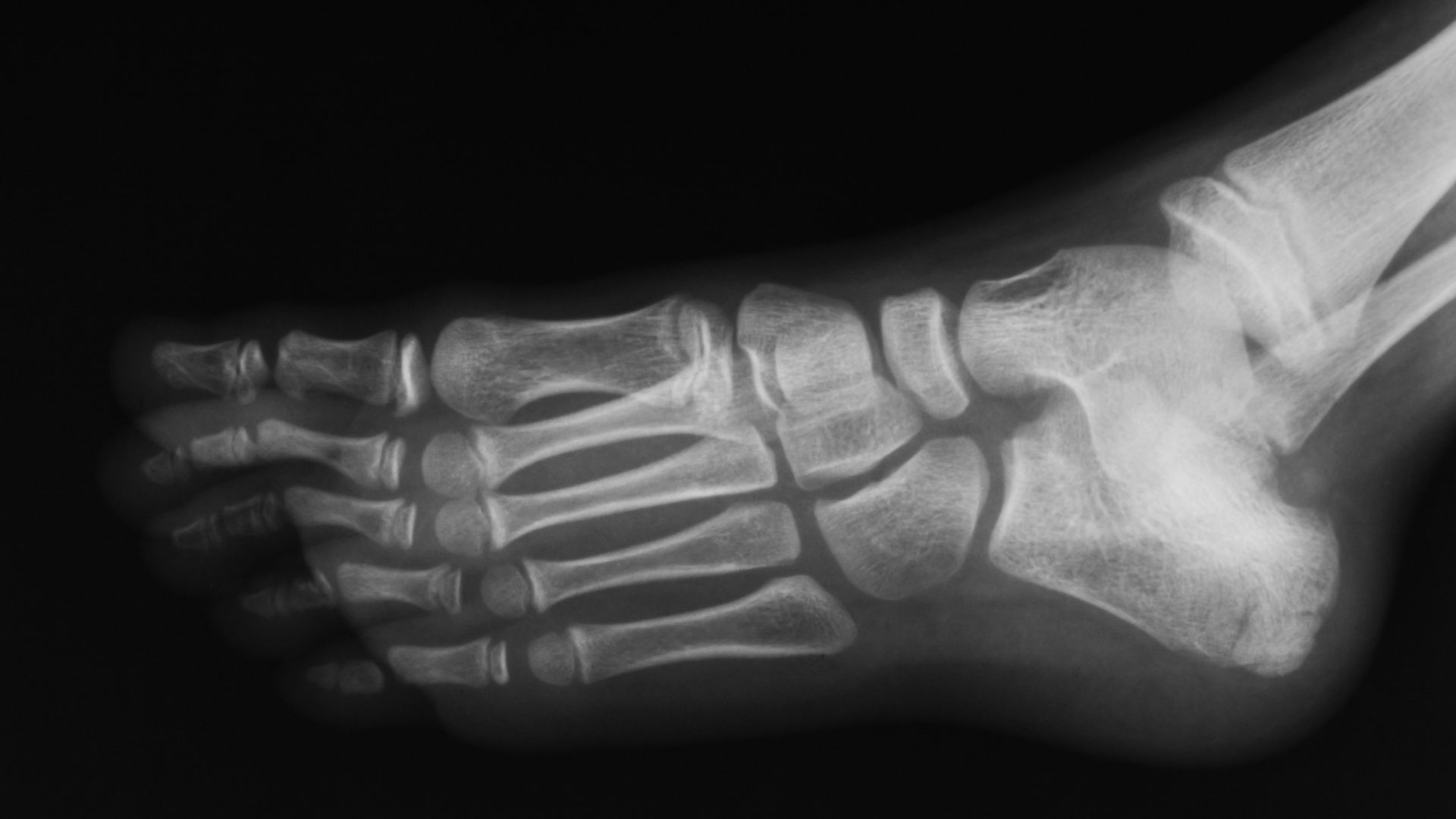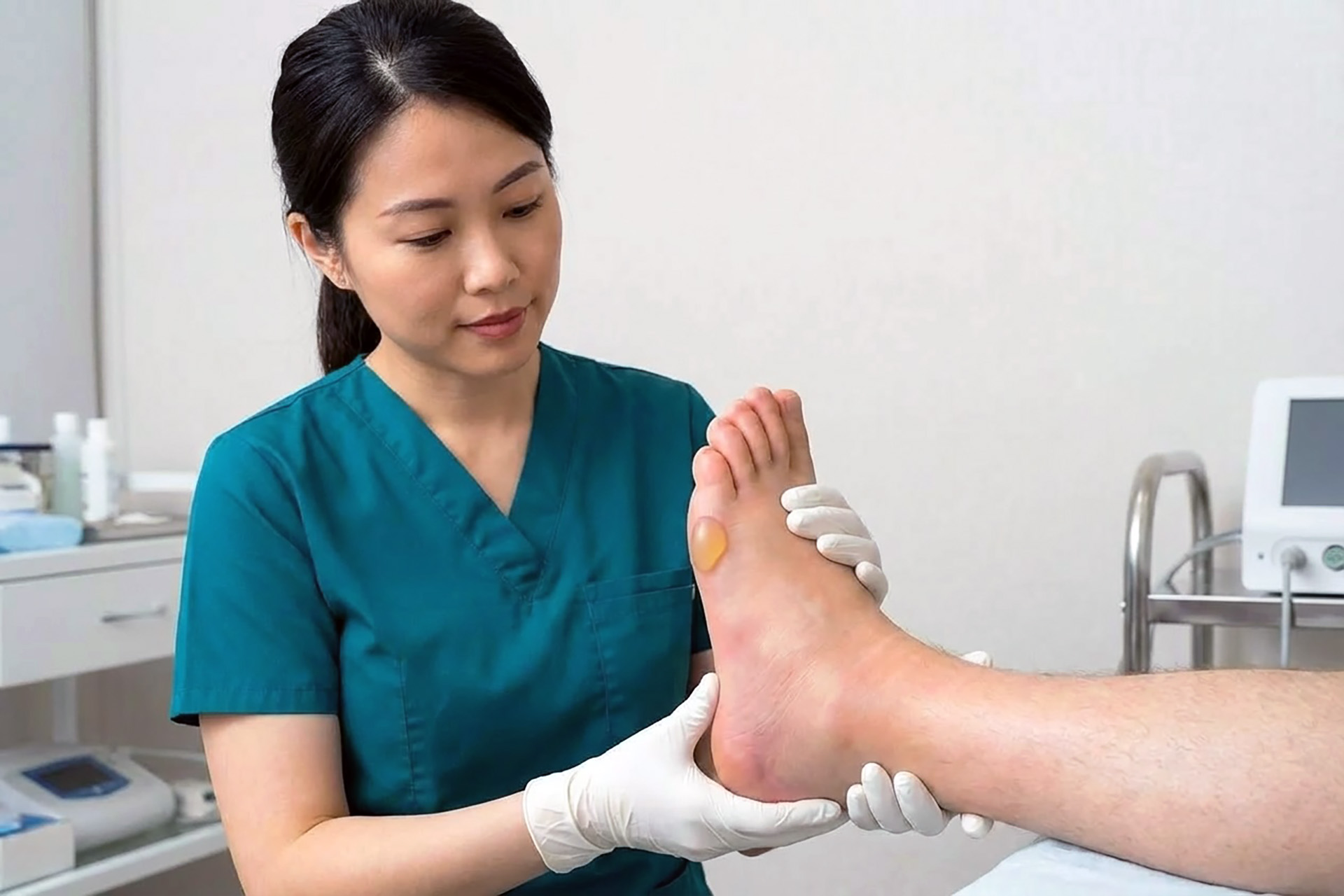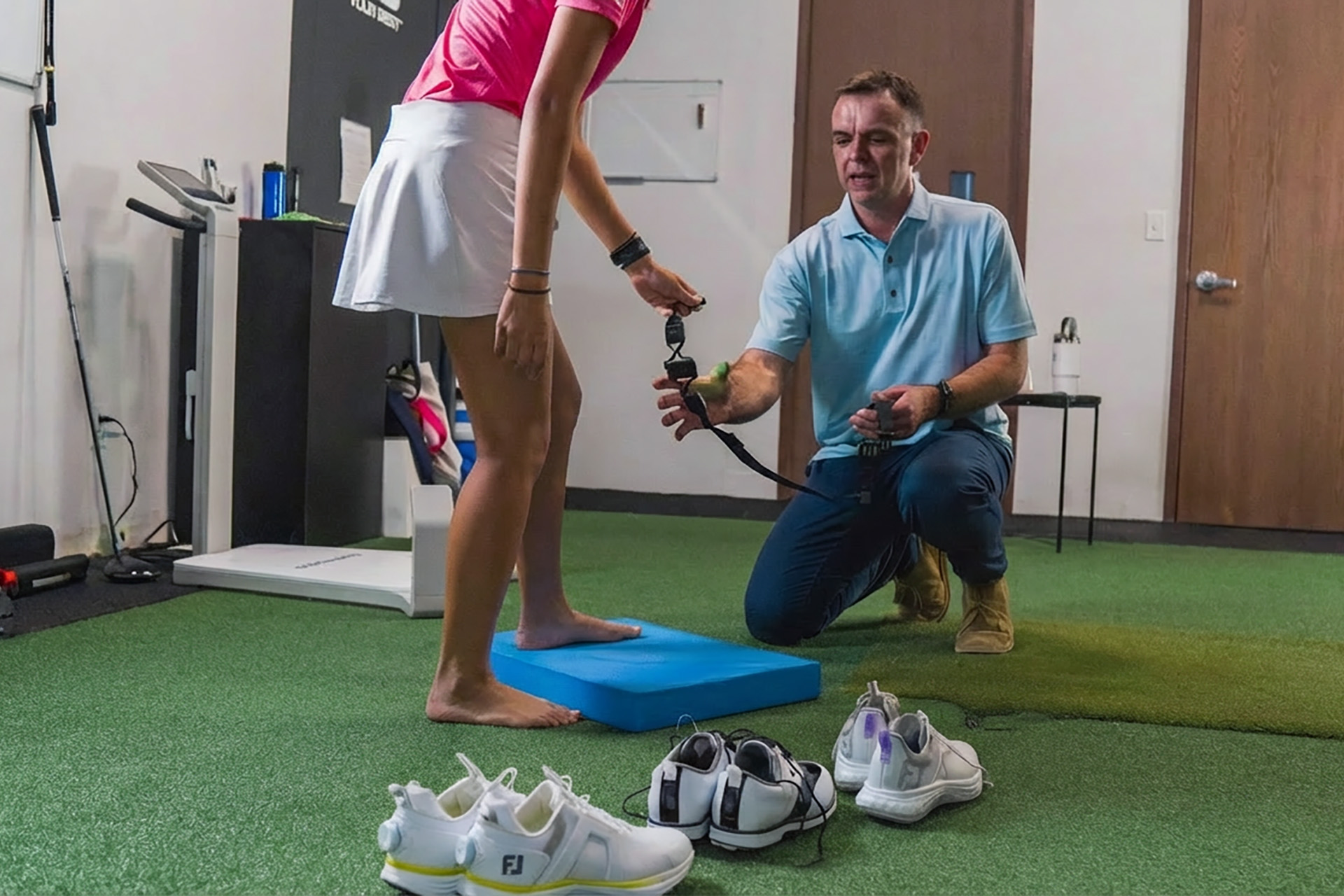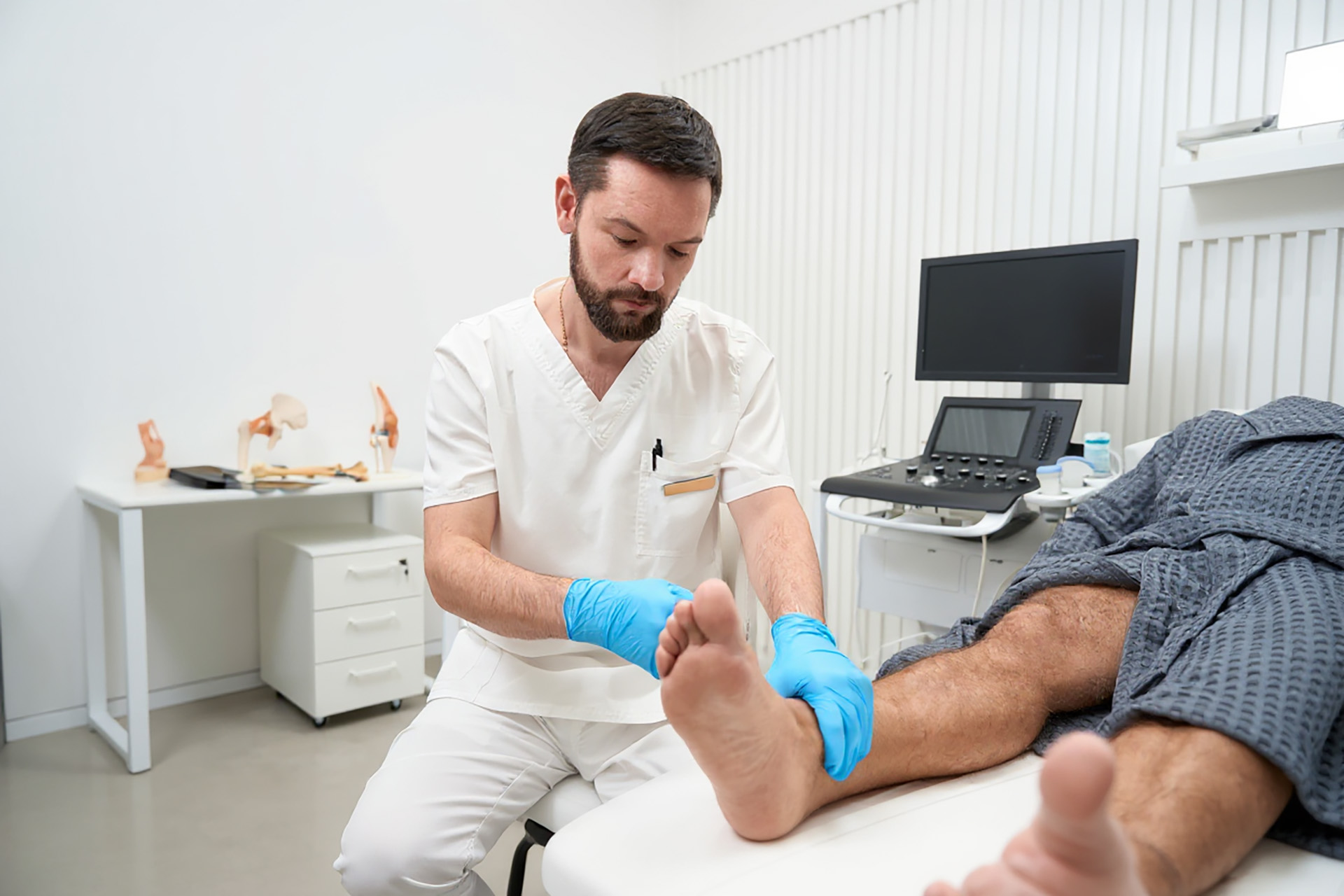Podiatric Management of Stress Fractures
Our feet – the remarkable feats of nature’s engineering – consist of an intricate network of bones, muscles, tendons, and ligaments. Within the average human foot, 26 bones form 33 joints, each meticulously designed for mobility and strength. However, this complexity also means that each bone is vulnerable to stress fractures.
Stress fractures are tiny cracks in the bone, often resulting from repetitive overuse or excessive force. This type of injury is notably prevalent among athletes across various sports, where performance demands can push the foot beyond its limits. Such fractures impact athletic performance and can lead to an extended recovery period if not managed effectively.
At The Foot Practice podiatry clinic, we understand that the journey to recovery from stress fractures begins with a crucial step: rest. The affected bone requires time to recuperate, a process that’s hindered if the activity causing the injury persists.
Stress fractures are small breaks in the bones of the foot, often resulting from repetitive stress or overuse. Without appropriate treatment, these fractures can escalate into more severe injuries, significantly impairing an athlete’s training capacity and performance.
The Foot Practice recognises the importance of preventing and treating these injuries with utmost care. By understanding the biomechanics of the foot and its demands, we can better support athletes and active individuals in maintaining foot health, optimising performance, and minimising the risk of such injuries.

Bringing Technology into Practice in the Management of Stress Fractures
In managing stress fractures, our podiatrist starts with a comprehensive clinical evaluation. This process involves an in-depth discussion of the patient’s symptoms, the activities that preceded the onset of pain, and a detailed physical examination to identify areas of tenderness.
The Foot Practice’s advanced diagnostic tools provide valuable biomechanical insights into your gait patterns and the pressure distribution beneath your feet, highlighting issues that may have contributed to the development of the stress fracture in the first place.
The system’s capability to perform detailed analyses of your stance, gait, and how your foot rolls off the ground can reveal subtle changes in gait. These changes may signal compensatory mechanisms due to the pain or discomfort caused by a stress fracture, often identifying the issue before the patient is fully aware of the injury.
By measuring static and dynamic pressure distribution under the feet, podiatrists can identify areas of excessive pressure or stress that may align with the location of a stress fracture or uncover risk factors for potential stress fractures. This allows for the development of a comprehensive management plan to address the root cause of the fracture and prevent future injuries.
In cases where stress fractures escalate in severity, surgical intervention may become necessary. This is particularly true for patients experiencing intense pain or when more conservative interventions haven’t yielded significant improvements.
Surgical options, such as internal fixation – where screws are used to maintain proper bone alignment – or bone grafting, might be required. Bone grafting involves transplanting healthy bone to the affected area, a method considered when the damage is extensive.
Can I Walk on My Foot with A Stress Fracture?
Walking is possible when dealing with a stress fracture in the foot but should be cautiously approached — minimising stress on the affected area to avoid worsening the injury. Recommendations vary based on the fracture’s severity, location, and individual health and activity levels. Rest and limited weight-bearing activities are typically advised, with supportive devices like specialised boots or footwear adjustments to relieve pressure on the foot.
Avoiding any activity that increases pain is essential, and a gradual return to walking under close supervision may be suggested as healing progresses.
Advanced pressure sensing force plate treadmill and gait analysis gives our podiatrist an insight into what’s happening along your lower limbs and abnormal movement patterns that might influence or be influenced by your stress fracture. Utilising detailed diagnostic and technological analysis, we can devise a plan to manage the condition specifically tailored to address a stress fracture, aiming to mitigate its impact and prevent future occurrences.
Orthotic therapy is an intervention to address biomechanical imbalances, with custom insoles aiding in redistributing pressure away from the fracture site and correcting foot alignment to support the healing process.
Adjustments in footwear are recommended to correct biomechanical factors contributing to the stress fracture. Protective footwear, such as stiff-soled shoes or pneumatic walking boots, may also be advised to minimise stress on the healing bone.
A key component of our approach is preventing further stress on your bones. As your recovery advances, the plan incorporates prescribed exercises to enhance strength and flexibility without imposing undue stress on the fracture site.
The objective is a gradual return to full activity, meticulously monitored through follow-up appointments and, when necessary, additional diagnostic imaging or gait analysis to rebalance your movement.
Combining clinical assessment with cutting-edge imaging, The Foot Practice’s personalised approach addresses the immediate concern of stress fractures and guides you toward a safe and sustainable recovery. Our goal is to help you return to your daily activities pain-free.
Causes and Risk Factors of Stress Fractures
Understanding stress fractures requires a holistic view of various contributing factors. Primarily, overuse is a common cause, especially in athletes engaged in repetitive activities such as running or jumping. Training through pain, a common misconception in sports, can harm bone health. Unlike muscles that adapt and strengthen under stress, bones necessitate a gradual increase in activity to develop endurance and resilience.
The risk factors extend beyond overuse. Biomechanical discrepancies, such as an improper gait, can lead to uneven stress distribution across the foot, gradually culminating in microfractures. Moreover, the role of footwear must be considered. Shoes that lack appropriate support or shock absorption can significantly elevate the risk of developing stress fractures.
Acknowledging the influence of nutritional factors and overall health is crucial. Nutritional deficiencies, particularly in calcium and vitamin D, can compromise bone strength, making them more susceptible to fractures. Medical conditions that affect bone density, such as osteoporosis and hormonal imbalances, also play a role.
Our clinic adopts an integrative approach to assessing and addressing these diverse risk factors. Our focus extends from examining individual biomechanics to providing comprehensive guidance on training regimes, nutritional advice, and selecting the proper footwear. This holistic strategy aims to treat stress fractures and educate our patients on the multifaceted aspects of foot health, ensuring a sustainable and healthy return to their daily activities or sports.

Metatarsal Stress Fractures
As mentioned, your foot hosts various bones, joints, muscles, and tendons. One of those bone structures is your metatarsals, bones that connect your ankles to your toes. Each toe corresponds to one metatarsal bone, meaning there are five in total, each a potential site for stress fractures. Your second and third metatarsals, mainly, are more prone to stress fractures due to how the foot absorbs impact.
Firstly, they are the longest and most flexible of the metatarsals, making them most likely to be overburdened by bending forces during weight-bearing activities. Secondly, they’re located in the middle of the foot, making them integral during propulsion putting them under more stress than the other metatarsals. Lastly, they’re also more likely to be affected by overpronation or high-arched feet, which alter the weight distribution on the foot. Because of these biomechanical reasons, the second and third metatarsals are more prone to stress fractures.
The good news is that since these metatarsal stress fractures are more common, more solutions exist to address them. Custom-made orthotics and other advanced solutions can ease the pressure off the second and third metatarsals.
Identifying the Early Symptoms & Diagnosis of Stress Fractures
Recognising the symptoms of stress fractures is essential for timely and effective treatment. The initial sign is often a persistent, dull ache in the affected area. This subtle onset can pose a challenge, especially for athletes who might dismiss it as a normal consequence of intense training, only acknowledging the problem when the pain escalates.
However, other symptoms warrant attention. Swelling and tenderness in the affected area are common indicators. These symptoms can progressively impact an athlete’s performance and daily activities. For foot injuries, the sensitivity becomes more pronounced during high-impact activities like jumping and running. The discomfort can escalate without appropriate intervention, making routine actions like walking or standing painful.
The Foot Practice emphasises the importance of early symptom recognition and consultation. By identifying and addressing these signs promptly, we aim to prevent the progression of the injury, enabling a smoother and quicker recovery process. Understanding these symptoms is crucial for athletes and anyone who leads an active lifestyle, ensuring the longevity of their foot health and overall well-being.







